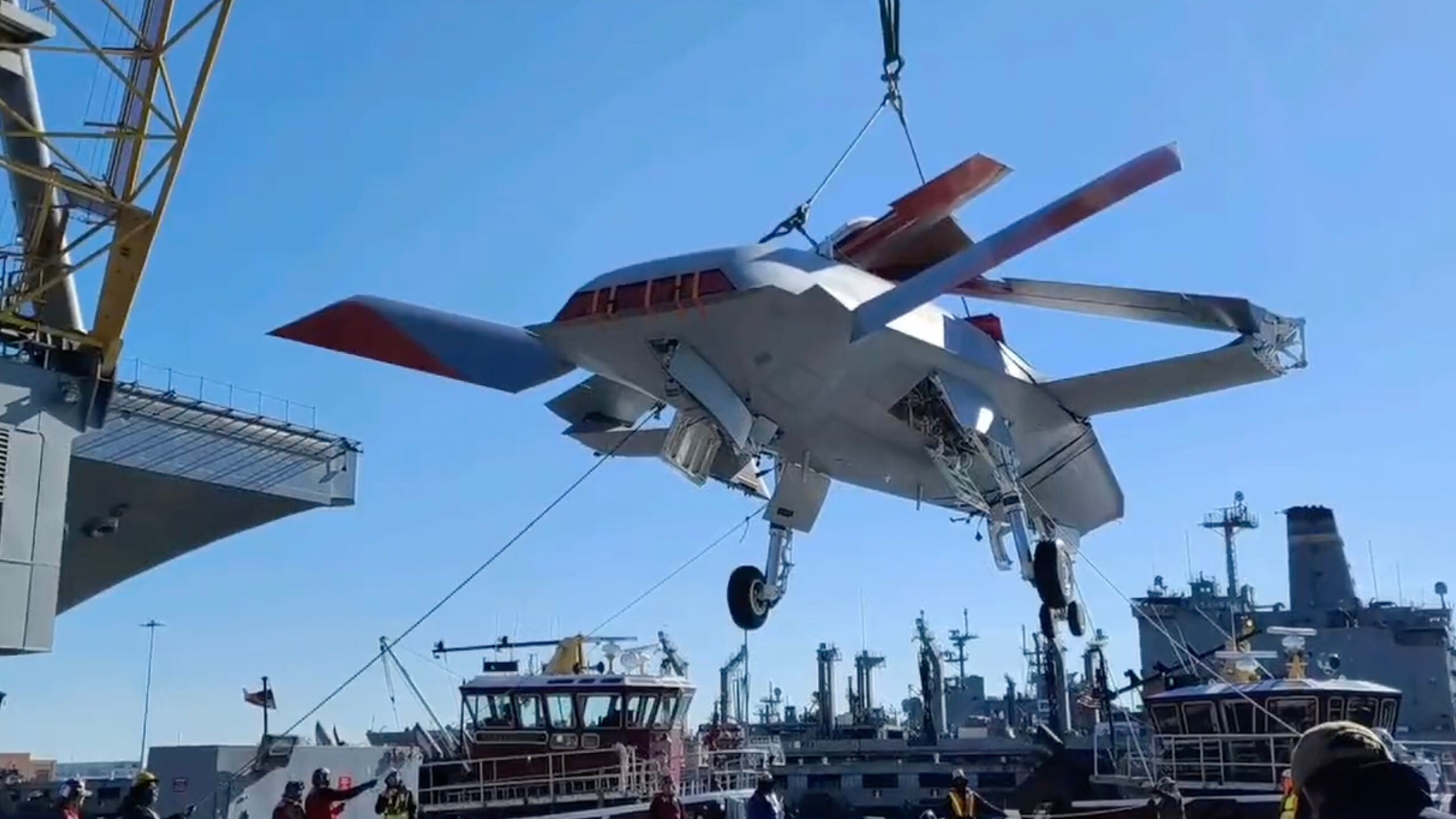The U.S. Navy’s new MQ-25 Stingray carrier-based tanker drone demonstrator has gone aboard an aircraft carrier for the first time to begin deck-handling trials. This is the latest in a string of milestones for the unmanned aircraft, which has so far this year conducted refueling tests with the F-35C Lightning II and F/A-18F Super Hornet strike fighters and the E-2D Advanced Hawkeye radar plane.
Naval Air Systems Command (NAVAIR) posted a video montage of still images on Twitter today showing Boeing’s Stingray demonstrator, also known as T1, being craned aboard the Nimitz class USS George H.W. Bush (CVN-77) sometime this week. The unmanned aircraft will not undergo flight testing from the carrier quite yet, but the Navy will begin to explore how the drones will be integrated onboard the ship, including moving them around on the elevators and in the hangar deck.
USS George H.W. Bush is the first of four Navy flattops set to be modified with the Unmanned Carrier Aviation Mission Control System, or UMCS, necessary to operate the MQ-25. The Stingray demonstrator has also undergone modifications ahead of these trials, including a new system integrated to enable personnel to remotely move it around the deck.
On Nov. 22, the Navy had announced that it, in cooperation with Boeing, was wrapping up various deck handling tests on the ground at Chambers Field, which is part of Naval Station Norfolk in Virginia. George H.W. Bush is homeported in Norfolk.
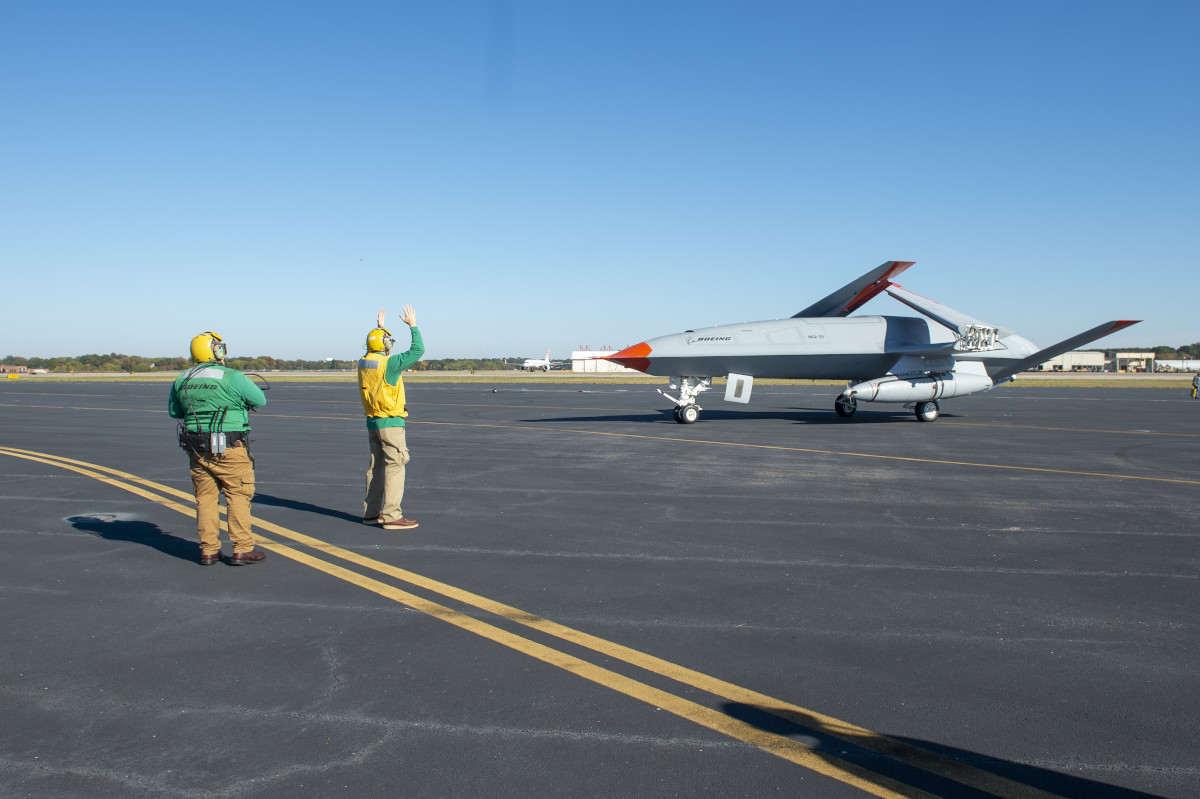
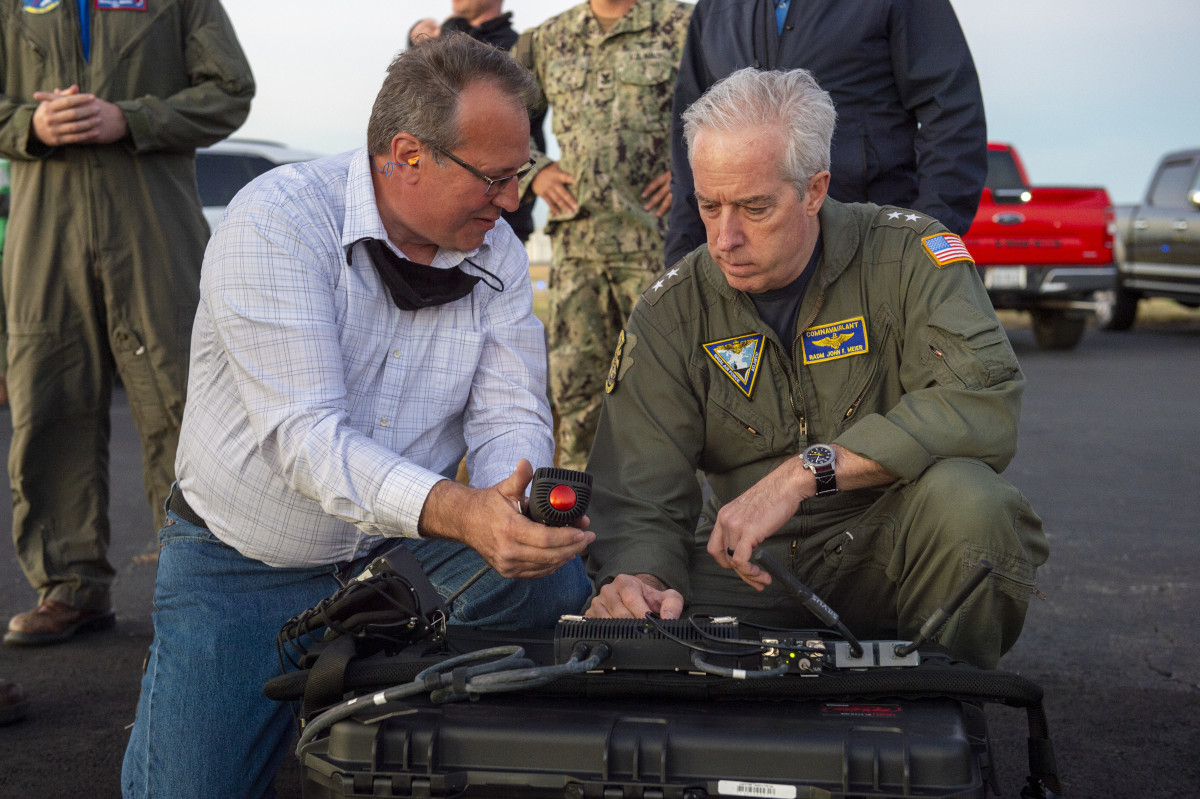
Previously, T1 had been used for various flight test work, including aerial refueling trials, from MidAmerica St. Louis Airport in Mascoutah, Illinois. As of mid-September, 36 test sorties had been completed, plus many more hours achieved with simulations using MQ-25 digital models.
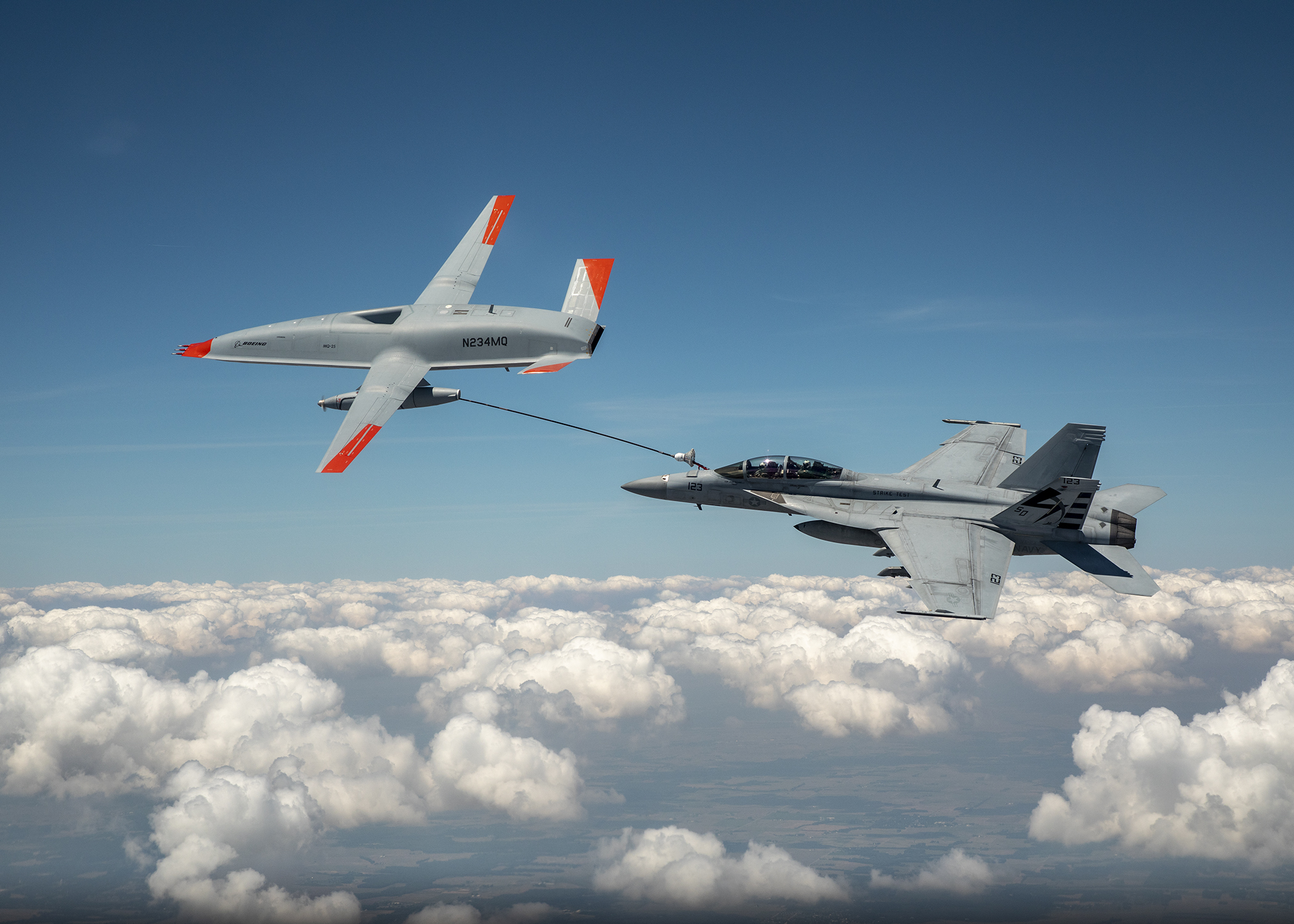
As well as the hard-working T1, production has begun on the first batch of four Engineering and Manufacturing Development (EMD) aircraft that are being completed under a 2018 contract award, to which another three MQ-25s have since been added.
The EMD aircraft will conduct more experimental work at the Boeing facility in St. Louis, Missouri before moving to Naval Air Station Patuxent River in Maryland, where the flight test program will commence. It will also include testing periods spent at Lakehurst in New Jersey and Eglin Air Force Base in Florida.
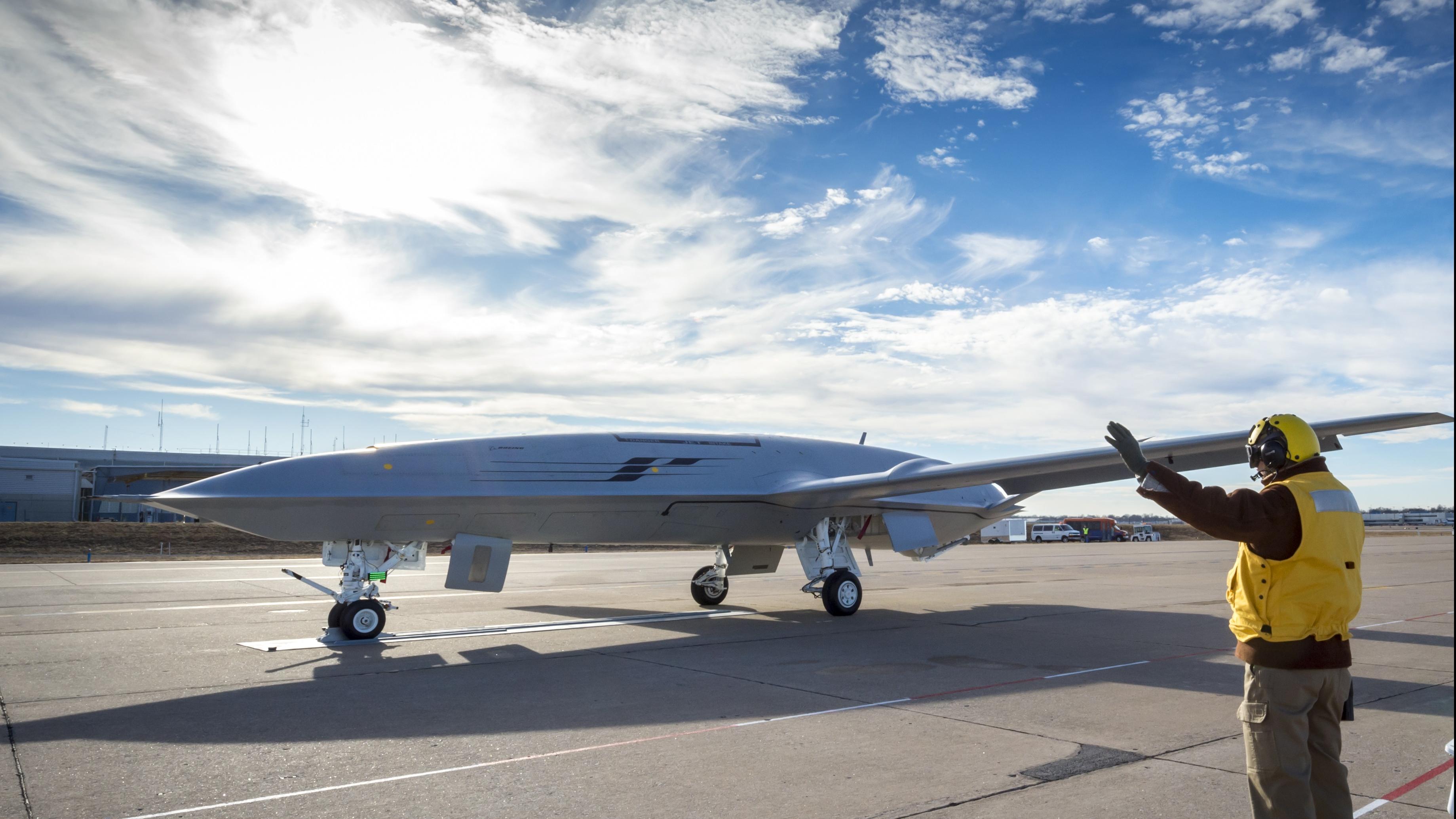
The first of these EMD aircraft is expected to be delivered in the fall of next year, a timeline that’s been impacted by the COVID-19 pandemic, as well as technical issues that have emerged with drone itself. Boeing paused work in the past to optimize the weight and strength of the drone, as well as to address an unspecified quality issue.
Despite these hiccups, the Navy is looking forward to fielding its first operational carrier-based unmanned aircraft, with plans calling for a total of 72 MQ-25s, and an initial operating capacity slated for Fiscal Year 2025.

As well as the pioneering introduction of a carrier-based drone, the Navy will also be getting its hands on an organic dedicated tanker capability for the first time in years, allowing tanker-tasked F/A-18E/F jets to return to their core missions. That will not only expand the combat capabilities of Strike Fighter Squadrons but also reduce fatigue across the Super Hornet fleet.
As the Pentagon continues to focus on the possibility of future conflict in the Asia Pacific region, the requirement for aerial tanking will only become more urgent, to extend the reach of carrier-based assets. For the Super Hornet, that requirement is even more critical now that plans to install conformal fuel tanks on the jets have been abandoned.

On top of the core refueling mission, the MQ-25 is ultimately expected to take on additional roles as well, including intelligence, surveillance, and reconnaissance (ISR) duties.
While seeing a drone craned onto a supercarrier is a novelty as of today, if all goes as expected in the MQ-25 program, these aircraft are set to play a central role in the carrier air wings of the future. Indeed, the Navy expects to eventually shift to a 40-60 unmanned-manned split, before achieving a longer-term goal of 60-40 in favor of drones. Those scenarios paint a very different picture to previous concepts of how a carrier air wing might appear around 2030:
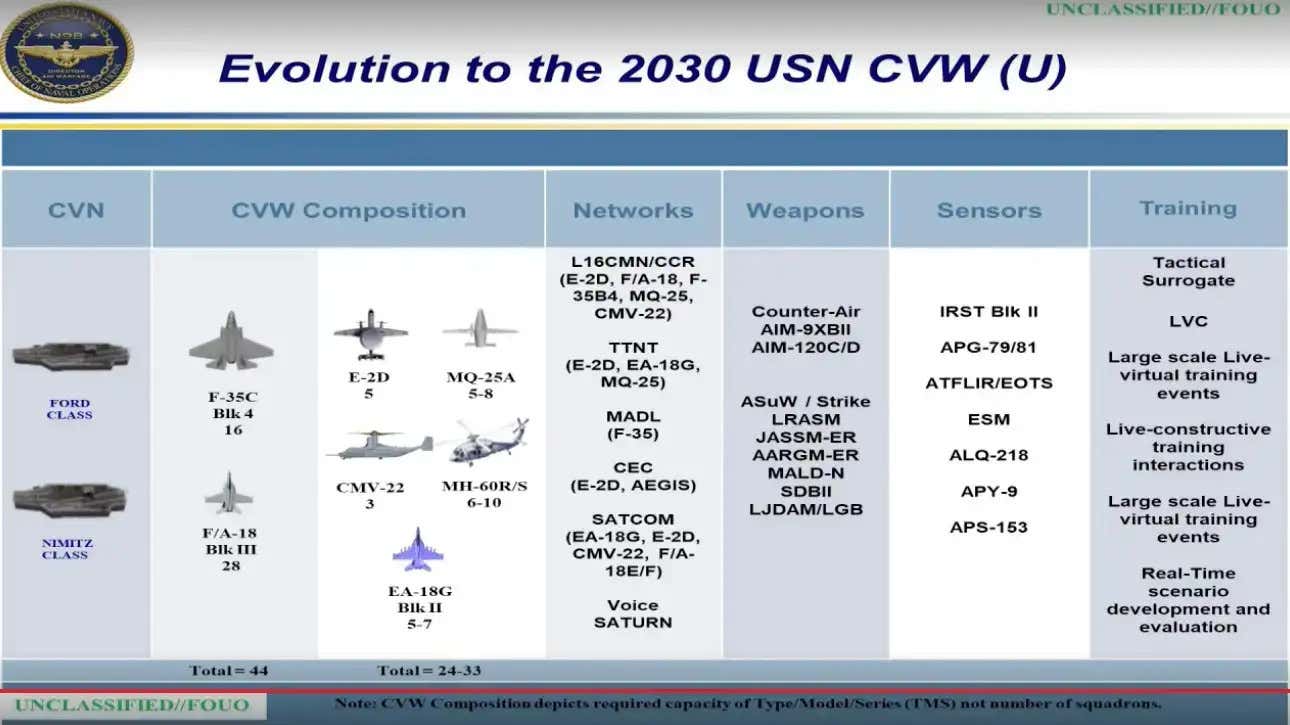
With this in mind, beyond its key mission set, the MQ-25 is acting as a critical stepping stone towards fulfilling other air combat roles with carrier-based drones.
So, it might not be set to fly from a carrier deck quite yet, but with an MQ-25 demonstrator now embarked in a carrier for the first time, we have a glimpse into the future of the carrier air wing.
Contact the author: thomas@thedrive.com
